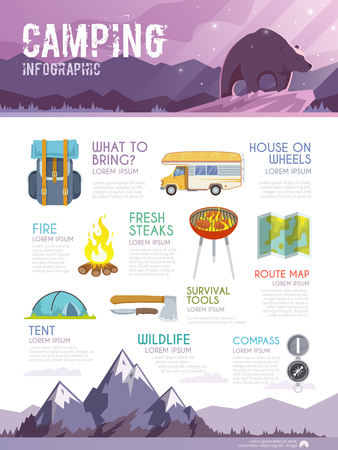The Grip Drawback is an easy and protected way to establish camping tent man lines. It's likewise an excellent technique for backing out a persistent tent fix. It can likewise be utilized to develop an adjustable tarpaulin man line where the change is made at the tent/tarp end. It serves in high winds as it doesn't slide.
1. Bowline
Bowline is a knot that makes a loop at one end of a rope. It's very easy to link and unknot, and it stands up to jamming quite well.
It's likewise a very good knot to utilize for joining 2 lines together, although it's generally advised that you use a different technique (such as a sheet bend or square knot) for this function, to prevent having both separate bowlines wear versus each other with time and deteriorate the line.
One prospective issue with bowlines is that they can easily jam or bind if the functioning end is improperly gone through the bunny hole. Several vital failures have been reported as a result of this, particularly when used in climbing applications. To assist avoid this from taking place, you can make a left-handed bowline by passing the end around the standing part of the loophole as opposed to via it, as shown in the computer animation below. This variation reportedly does far better and holds up against ring stress (a distending pressure applied either side of the knot) much better than the standard bowline.
2. Grip Drawback
Utilizing these clutching drawbacks to safeguard your man lines aids you stay clear of the issue of your line jamming while changing or tightening them. They are likewise helpful when attaching a line to a things that is tougher to reach than your standing end, such as a tree or big support object.
The Hold Drawback is a friction knot that can be conveniently shifted up or down the line while slack however holds firm under load. It works for tensioning ridgelines or person lines and for camping applications to secure tarps or tents.
To link the Grip Drawback, pass the working end around the standing part two times and tuck it under itself. To tighten, pull on the functioning end to develop a bight and after that utilize the bight to protect the knot to itself. For included safety and security, you can wrap the functioning end around the standing component three times to boost rubbing and avoid the drawback from sliding under load.
3. Midshipman's Drawback
Also known as the Taut Line Drawback (ABOK # 1856, p 310), Flexible Hitch, or Rigger's Hitch this knot produces a flexible loop at the end of a rope that can be slid backwards and forwards the standing end however still holds snugly when tightened. It is also very easy to unknot while under load.
Ashley advises this knot for a tent person line because unlike the bowline it can be connected while under load and is much less vulnerable to turning. It also develops an intermediate Awning Drawback that can take the first lots while connecting the last Fifty percent Hitch
To utilize this knot cover the functioning end around a things such as a pole or cleat. Next pass it back toward the item through the first Half Drawback producing a second Awning Drawback. Lastly surface connecting the last Fifty percent Drawback and draw hard to dress and tighten. For additional safety and security wrap a second Midshipman's Hitch on top of the initial.
4. Adjustable Grasp Drawback.
The Adjustable Grasp Hitch, also known as the Crawley Adjustable Hitch and the Adjustable Loop Knot, is a friction hitch that can be conveniently moved up or down a line with slack however holds firm under lots. family tent It is generally made use of for adjusting tent ridge lines or tarps around camp.
This slide-and-grip knot gives good hold and is easier to link than the Tautline Drawback or Midshipman's Hitch, yet should not be utilized for important applications considering that it may slide when shock loaded. It can be improved by including additional starting turns to boost the "grip" and friction in unsafe products.
To link this friction hitch, pass the working end around the item, after that wrap it back together with itself and put the end under the 2nd turn. Draw the working end to tighten up the knot.
